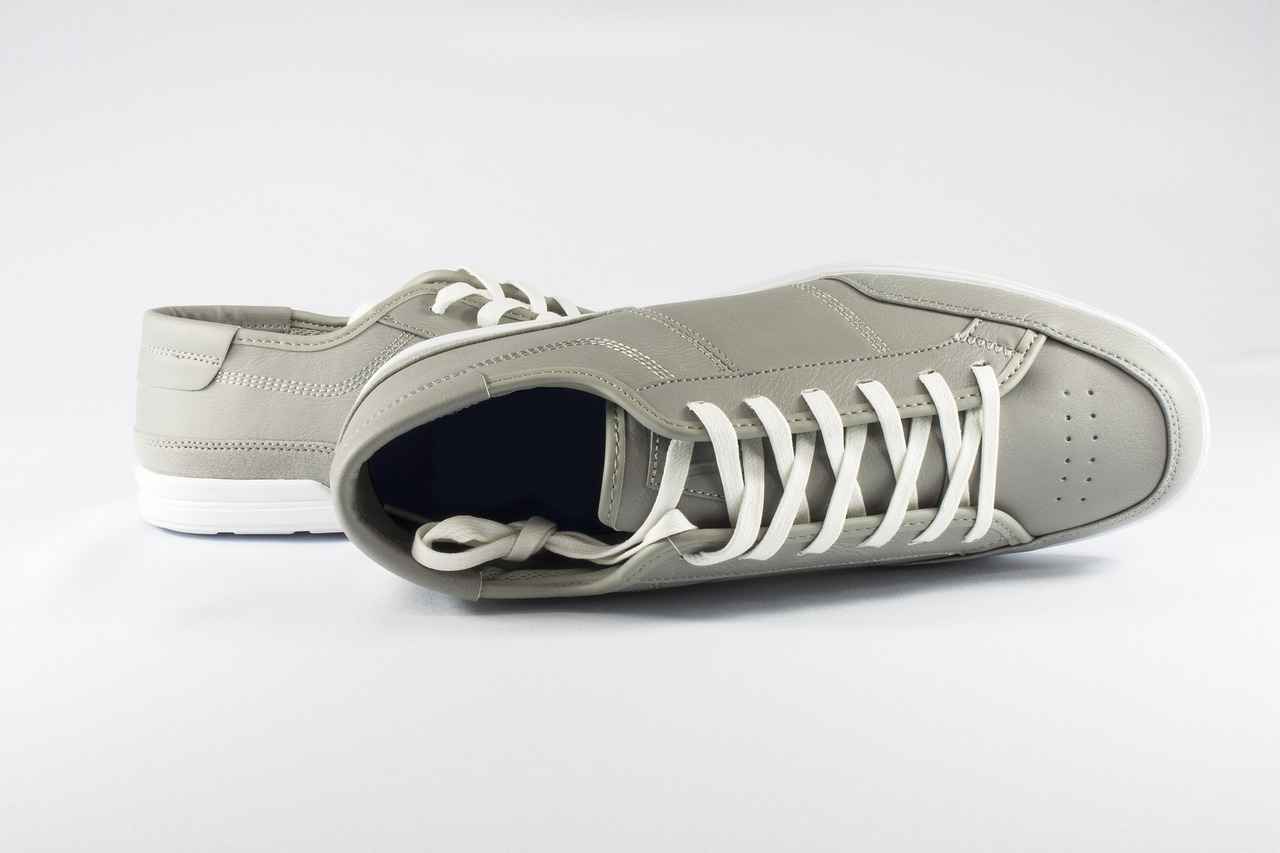This article takes you on a journey through the inner workings of New Balance’s headquarters, shedding light on the brand’s rich history, vibrant culture, and the innovative practices that distinguish it in the athletic footwear industry.
The Legacy of New Balance
Founded in 1906, New Balance has evolved from a small arch support company into a global leader in athletic footwear. The brand’s commitment to quality and performance has remained steadfast, making it a trusted name among athletes and fitness enthusiasts alike.
Headquarters Location and Architectural Design
Situated in Boston, Massachusetts, New Balance’s headquarters is more than just an office; it is a testament to modern architectural design. The building’s layout emphasizes open spaces and natural light, fostering an inspiring atmosphere for both employees and visitors.
- Architectural Highlights: The headquarters features innovative designs that promote collaboration and creativity.
- Eco-Friendly Practices: The use of sustainable materials and energy-efficient systems reflects the brand’s commitment to environmental responsibility.
- Employee-Centric Areas: Spaces dedicated to fitness and teamwork enhance employee well-being and productivity.
Commitment to Sustainability
New Balance is at the forefront of sustainable practices within the industry. The company prioritizes eco-friendly initiatives, from sourcing materials to manufacturing processes.
- Recycling Programs: Robust recycling initiatives ensure minimal waste in operations.
- Sustainable Materials: The incorporation of recycled plastics and organic cotton showcases New Balance’s leadership in sustainability.
Employee Culture and Community Involvement
The culture at New Balance fosters inclusivity and community engagement. Employees benefit from various programs that enhance job satisfaction and promote social responsibility.
- Employee Benefits: Health programs and professional development opportunities contribute to high retention rates.
- Community Outreach: The brand actively supports local organizations and encourages volunteerism among employees.
Innovations in Product Development
New Balance invests significantly in research and development, leveraging cutting-edge technology to enhance product performance.
- 3D Printing: This technology allows rapid prototyping and customized footwear solutions.
- Data-Driven Design: Analytics help the brand better understand consumer preferences, leading to targeted product offerings.
Future Directions
As New Balance looks ahead, the focus remains on expanding its market presence while maintaining its core values of quality and sustainability. The brand is committed to exploring new technologies and materials to enhance product performance for future generations.
- Global Expansion: Plans are underway to enter new markets while upholding community engagement.
- Ongoing Innovation: Continuous exploration of new strategies ensures New Balance remains a leader in the athletic footwear industry.

The History of New Balance
Understanding the origins of New Balance provides crucial context for its remarkable evolution into a global leader in athletic footwear. Established in 1906 by William J. Riley, the brand initially focused on creating arch supports and other orthopedic footwear. This commitment to quality and performance laid the foundation for what would become a pioneering force in the industry.
Over the decades, New Balance has embraced innovation, evolving from a small Boston-based company to a major player on the world stage. The introduction of the Trackster in 1960 marked a significant milestone, as it became the first running shoe to feature a waffle sole. This innovative design not only enhanced performance but also solidified New Balance’s reputation for cutting-edge technology in athletic footwear.
Throughout its history, New Balance has maintained a strong commitment to American manufacturing, with a significant portion of its products still made in the USA. This dedication to local production reflects the brand’s ethos of quality and ethical practices, setting it apart from competitors who often outsource manufacturing.
New Balance’s journey has also been marked by key partnerships and sponsorships in various sports, including running, basketball, and tennis. These collaborations have not only expanded its product offerings but have also reinforced its position as a trusted choice among athletes.
In recent years, New Balance has further enhanced its legacy by embracing sustainability. The brand has made strides in using recycled materials and implementing eco-friendly manufacturing processes, aligning with the growing consumer demand for environmentally responsible products.
Today, New Balance continues to thrive as a brand that values both innovation and tradition, making it a favorite among athletes and fitness enthusiasts alike. Its rich history serves as a testament to its ongoing dedication to excellence in the athletic footwear industry.

Location and Design of the HQ
New Balance’s headquarters, located in the vibrant city of Boston, Massachusetts, stands as a beacon of innovation and design in the athletic footwear industry. This remarkable facility is not merely an office; it embodies the brand’s core values and commitment to excellence. The architectural design of the headquarters is a perfect blend of functionality and sustainability, reflecting the ethos of a company that has been a pioneer since its inception in 1906.
The building’s layout is meticulously crafted to foster collaboration and creativity among employees. With expansive open spaces, the design maximizes natural light, creating an inviting atmosphere that enhances productivity. The emphasis on transparency and openness is evident in the numerous glass walls and communal areas, encouraging interaction and teamwork.
In addition to its aesthetic appeal, New Balance’s headquarters is a testament to the company’s commitment to sustainable practices. The use of eco-friendly materials throughout the construction process is a reflection of the brand’s dedication to reducing its environmental footprint. Energy-efficient systems are integrated into the building’s infrastructure, ensuring that operations are not only effective but also responsible.
Moreover, the headquarters features a variety of employee-centric spaces designed to promote well-being and balance. Fitness areas, relaxation zones, and collaborative workspaces are strategically placed to encourage a healthy lifestyle and teamwork among staff members. This thoughtful design approach not only boosts morale but also supports the overall mission of New Balance to inspire individuals to live active and fulfilling lives.
In summary, New Balance’s headquarters in Boston is more than just a workplace; it is an architectural marvel that embodies the brand’s values. By integrating innovative design with sustainable practices, New Balance sets a standard for corporate responsibility and employee engagement in the athletic footwear industry.
Architectural Features
The of New Balance’s headquarters are a testament to the brand’s dedication to innovation and employee well-being. The building’s design is characterized by a modern aesthetic that seamlessly integrates open spaces and abundant natural light. This thoughtful layout not only enhances the visual appeal of the workspace but also fosters a sense of community among employees.
As you walk through the halls, you will notice that the large windows allow sunlight to flood the interiors, creating a vibrant atmosphere that invigorates the workforce. The emphasis on transparency and openness in the design reflects New Balance’s commitment to collaboration and teamwork. Employees are encouraged to interact, share ideas, and work together in a setting that feels both inviting and dynamic.
In addition to promoting interaction, the headquarters features a variety of flexible workspaces designed to accommodate different working styles. From quiet zones for focused tasks to collaborative areas equipped with modern technology, the layout supports a diverse range of activities. This adaptability is essential in today’s fast-paced work environment, where creativity and efficiency are paramount.
Moreover, the architectural design incorporates sustainable practices, aligning with New Balance’s mission to reduce its environmental impact. The use of eco-friendly materials and energy-efficient systems underscores the brand’s commitment to sustainability. Green roofs and landscaped terraces not only enhance the aesthetic value but also contribute to biodiversity and improve air quality.
Ultimately, the architectural features of New Balance’s headquarters are more than just a visual statement; they embody the brand’s values of innovation, sustainability, and community. By creating an inspiring work environment, New Balance sets the stage for employees to thrive, fostering a culture that drives success in the competitive athletic footwear industry.
Eco-Friendly Initiatives
New Balance is not just a leader in athletic footwear; it is also a pioneer in sustainability. At the heart of this commitment lies its headquarters in Boston, Massachusetts, which serves as a model for eco-friendly practices. The company has made significant strides in integrating eco-friendly materials and energy-efficient systems throughout its operations, thereby reducing its overall environmental footprint.
The headquarters itself is designed with sustainability in mind. It incorporates a variety of green building materials, such as recycled steel and low-VOC paints, which contribute to a healthier indoor environment. Moreover, the building features solar panels that harness renewable energy, significantly lowering its reliance on non-renewable sources. This innovative approach not only minimizes energy consumption but also sets a benchmark for other companies in the industry.
One of the standout features of New Balance’s eco-friendly initiatives is its water conservation systems. These systems include rainwater harvesting and greywater recycling, which are essential for reducing water waste. By implementing these technologies, New Balance demonstrates its commitment to preserving natural resources while simultaneously promoting a sustainable workplace.
In addition to its headquarters, New Balance extends its sustainability efforts to its product lines. The company actively seeks to use sustainable materials in its footwear and apparel, such as organic cotton and recycled plastics. This initiative not only helps in reducing waste but also appeals to environmentally conscious consumers.
Furthermore, New Balance’s commitment to sustainability is reflected in its corporate social responsibility (CSR) programs. The company engages in community outreach initiatives that focus on environmental education and conservation efforts, reinforcing its dedication to creating a positive impact beyond its corporate walls.
In conclusion, New Balance’s eco-friendly initiatives exemplify a comprehensive approach to sustainability. By integrating green technologies and materials into its headquarters and product lines, the company not only reduces its environmental impact but also inspires others in the industry to follow suit.
Employee-Centric Spaces
In today’s competitive work environment, organizations recognize the importance of creating that enhance both productivity and well-being. At New Balance’s headquarters, the design is a testament to this philosophy, incorporating various areas specifically tailored to meet the needs of its workforce.
The headquarters features fitness areas that encourage employees to prioritize their health and wellness. These spaces are equipped with modern exercise equipment and facilities for group fitness classes, allowing staff to engage in physical activity during breaks. This not only promotes a healthier lifestyle but also helps in reducing stress and increasing overall job satisfaction.
Moreover, the inclusion of collaboration zones is a key aspect of the design. These areas are designed to foster teamwork and creativity, providing comfortable seating arrangements, whiteboards, and technology hubs for brainstorming sessions. By facilitating open communication and collaboration among employees, New Balance cultivates a culture of innovation and shared responsibility.
| Employee-Centric Features | Benefits |
|---|---|
| Fitness Areas | Encourages physical health and reduces stress |
| Collaboration Zones | Enhances teamwork and creativity |
| Relaxation Spaces | Provides mental breaks and boosts morale |
Additionally, New Balance has integrated relaxation spaces within the headquarters. These quiet zones allow employees to unwind, recharge, and reflect, which is essential for maintaining mental health in a fast-paced work environment. Such thoughtful design elements contribute significantly to employee morale and retention.
By prioritizing , New Balance not only demonstrates its commitment to the well-being of its staff but also sets a standard in the industry for creating a workplace that inspires and nurtures its employees. This holistic approach to design ultimately translates into enhanced productivity and a more engaged workforce.
Innovative Workspaces
At New Balance, the concept of open-plan workspaces plays a pivotal role in shaping the company’s innovative culture. These spaces are designed to encourage collaboration and stimulate creativity, essential elements that drive the brand’s success in a highly competitive market.
The layout of these workspaces eliminates traditional barriers, allowing employees from various departments to interact freely. This fosters an environment where ideas can flow seamlessly, leading to creative problem-solving and the rapid development of new concepts. By bringing together diverse teams, New Balance harnesses a wealth of perspectives, ultimately enhancing its ability to innovate.
In addition to facilitating collaboration, the open-plan design promotes a sense of community among employees. This collective spirit not only enhances teamwork but also builds strong relationships, contributing to a positive workplace culture. Employees feel more connected and engaged, which can lead to improved job satisfaction and productivity.
Moreover, the design of these workspaces incorporates elements that inspire creativity. Natural light floods the areas, and vibrant colors and artwork stimulate the senses, creating an atmosphere that encourages out-of-the-box thinking. Breakout zones and relaxation areas are strategically placed, allowing employees to step away from their desks and recharge, further enhancing their creative output.
New Balance understands that in today’s fast-paced world, innovation is crucial for survival. By investing in , the company not only nurtures its employees’ talents but also positions itself as a leader in the athletic footwear industry. This commitment to fostering a culture of innovation is vital for staying ahead of competitors and meeting the ever-evolving needs of consumers.

The Brand’s Commitment to Sustainability
New Balance has long been recognized as a pioneer in the athletic footwear industry, not only for its innovative designs but also for its unwavering commitment to sustainability. This dedication is woven into the very fabric of the brand, influencing every aspect of its operations and corporate philosophy.
At the heart of New Balance’s sustainable practices is a comprehensive approach that encompasses material sourcing, manufacturing processes, and product lifecycle management. The company actively seeks to use recycled and organic materials in its products, such as recycled plastics and organic cotton, reducing the environmental impact of its footwear. This initiative not only conserves natural resources but also sets a precedent for the industry, encouraging other brands to follow suit.
New Balance’s commitment extends beyond materials. The company has implemented robust recycling programs and waste management strategies throughout its facilities. By prioritizing waste reduction and recycling, New Balance ensures that its operational footprint is minimized, aligning with global sustainability goals. This proactive approach is evident in their manufacturing processes, where energy-efficient systems are integrated to lower energy consumption and emissions.
Moreover, the brand embraces transparency in its sustainability efforts, regularly sharing progress and challenges with stakeholders. This openness fosters trust and accountability, reinforcing New Balance’s position as a leader in sustainable practices within the athletic footwear sector.
As part of its long-term vision, New Balance is continuously exploring innovative solutions to enhance its sustainability initiatives. This includes investing in research and development to discover new materials and technologies that further reduce environmental impact. The brand understands that sustainability is not just a trend; it is an essential component of its identity and future success.
In summary, New Balance’s commitment to sustainability is a multifaceted endeavor that encompasses responsible sourcing, efficient manufacturing, and a transparent corporate philosophy. By prioritizing these practices, New Balance not only leads by example but also inspires others in the industry to adopt similar values.
Recycling and Waste Management
In today’s world, where environmental concerns are at the forefront of corporate responsibility, New Balance stands out with its commitment to sustainable practices, particularly in the realm of recycling and waste management. The company’s initiatives reflect a proactive approach to minimizing its ecological footprint while promoting a culture of sustainability within the organization.
New Balance has established a series of robust recycling programs that are integrated into its daily operations. These programs are designed to maximize the recovery of materials that would otherwise contribute to landfill waste. For instance, the company has implemented comprehensive systems for recycling materials such as cardboard, paper, and plastics used in its manufacturing processes. This not only reduces waste but also conserves valuable resources, aligning with the principles of a circular economy.
Moreover, New Balance actively engages its employees in these initiatives, fostering a culture of environmental awareness. Through regular training and awareness campaigns, employees are encouraged to participate in recycling efforts both at work and in their personal lives. This engagement is crucial, as it cultivates a sense of responsibility and ownership among staff members regarding the company’s sustainability goals.
In addition to recycling, New Balance has adopted waste reduction strategies that aim to minimize excess production and waste generation. These strategies include optimizing manufacturing processes to reduce scrap and investing in technologies that enhance efficiency. For example, the use of advanced materials and production techniques not only improves product quality but also significantly decreases waste output during production.
Furthermore, New Balance collaborates with external partners and organizations dedicated to environmental conservation. By participating in community clean-up events and supporting local recycling initiatives, the company extends its commitment beyond its operations, contributing to broader environmental goals.
In summary, New Balance’s dedication to recycling and waste management exemplifies its role as a leader in sustainable practices within the athletic footwear industry. By implementing comprehensive recycling programs and effective waste reduction strategies, the company not only enhances its operational efficiency but also sets a standard for others to follow in the pursuit of environmental stewardship.
Use of Sustainable Materials
New Balance has emerged as a frontrunner in the athletic footwear industry, particularly through its commitment to sustainability. The brand’s efforts to incorporate sustainable materials into its products are not merely a trend but a core aspect of its identity. This initiative reflects a broader movement within the industry towards environmentally responsible practices.
One of the most significant strides New Balance has made is the use of recycled plastics. By sourcing materials that would otherwise contribute to landfill waste, the company is actively reducing its environmental impact. These recycled plastics are integrated into various product lines, showcasing how sustainability and performance can coexist. This innovative approach not only helps in conserving resources but also sets a benchmark for other brands in the industry.
In addition to recycled plastics, New Balance has also prioritized the use of organic cotton. This choice supports sustainable farming practices that avoid harmful pesticides and chemicals, promoting a healthier ecosystem. By choosing organic materials, New Balance demonstrates its commitment to not only the quality of its products but also the health of the planet.
Furthermore, the company’s dedication to sustainability extends beyond materials. New Balance is continuously exploring new ways to enhance its manufacturing processes, aiming to minimize waste and energy consumption. The integration of eco-friendly practices in production is a testament to the brand’s leadership in sustainability.
As the demand for sustainable products grows, New Balance’s proactive measures position it as a leader in the market. Consumers are increasingly looking for brands that align with their values, and New Balance’s commitment to using sustainable materials speaks volumes about its dedication to both quality and responsibility. By embracing this ethos, New Balance not only enhances its product offerings but also contributes to a more sustainable future for the athletic footwear industry.

Employee Culture and Community Engagement
At New Balance, the employee culture is a vibrant tapestry woven from the threads of inclusivity, community engagement, and social responsibility. This culture not only fosters a strong sense of belonging among employees but also drives the company’s commitment to making a positive impact both internally and externally.
The foundation of New Balance’s culture is its emphasis on inclusivity. Employees from diverse backgrounds are encouraged to share their perspectives, which enriches the workplace environment. This diversity is celebrated through various initiatives, including employee resource groups that focus on different aspects of identity, such as gender, ethnicity, and sexual orientation. These groups provide a platform for employees to connect, support each other, and contribute to a culture of acceptance.
Community involvement is another cornerstone of New Balance’s ethos. The company actively engages with local organizations and encourages its employees to participate in volunteering and philanthropic efforts. This not only strengthens the bond between employees and their communities but also reinforces the brand’s commitment to social responsibility. For instance, New Balance regularly organizes team-building activities that involve community service, allowing employees to give back while fostering teamwork.
| Community Initiatives | Description |
|---|---|
| Volunteer Days | Employees participate in local projects, enhancing community ties. |
| Partnerships with Nonprofits | Collaboration with local charities to support various causes. |
| Health and Wellness Programs | Promoting employee well-being through fitness and health initiatives. |
New Balance also prioritizes employee benefits that contribute to job satisfaction and retention. Comprehensive health programs, flexible work arrangements, and opportunities for professional development are just a few of the offerings that help cultivate a supportive work environment. These benefits are designed to empower employees, allowing them to thrive both personally and professionally.
Ultimately, the culture at New Balance is a reflection of its core values: inclusivity, community engagement, and social responsibility. By fostering a workplace where employees feel valued and connected, New Balance not only enhances the employee experience but also strengthens its reputation as a socially conscious leader in the athletic footwear industry.
Employee Benefits and Programs
At New Balance, the well-being of employees is a top priority, reflected in the extensive employee benefits and programs offered. These initiatives are designed not only to enhance the quality of life for employees but also to foster a culture of loyalty and satisfaction within the organization.
One of the standout features of New Balance’s employee benefits is its comprehensive health and wellness programs. These programs include access to fitness facilities, wellness challenges, and mental health resources, which empower employees to take charge of their health. By promoting a healthy lifestyle, New Balance ensures that employees feel their best, both physically and mentally.
In addition to health initiatives, New Balance places a strong emphasis on professional development. The company offers various training programs, workshops, and mentorship opportunities, allowing employees to enhance their skills and advance their careers. This commitment to growth not only benefits the individual but also enriches the company as a whole by cultivating a highly skilled workforce.
Moreover, New Balance recognizes the importance of work-life balance. Flexible working hours and remote work options are just a few of the ways the company supports its employees in managing their personal and professional lives. This flexibility leads to increased job satisfaction and helps reduce turnover rates.
The company also encourages a sense of community through team-building activities and social events, which help strengthen relationships among employees. By fostering a collaborative environment, New Balance enhances teamwork and innovation, essential components for success in the competitive athletic footwear industry.
Overall, New Balance’s robust employee benefits and programs significantly contribute to high job satisfaction and retention rates. By investing in their workforce, the company not only attracts top talent but also creates a motivated and engaged team dedicated to the brand’s mission and values.
Community Outreach Initiatives
The commitment of New Balance extends beyond just producing high-quality athletic footwear; it actively participates in enhancing the communities it serves. By engaging in numerous community outreach initiatives, the brand demonstrates its dedication to social responsibility and sustainability.
New Balance recognizes that strong communities are essential for a thriving society. Therefore, it partners with local organizations to support various causes, from education to health and wellness. This collaboration not only benefits the community but also fosters a sense of purpose among employees, encouraging them to take part in volunteer opportunities.
- Support for Local Organizations: New Balance collaborates with nonprofits and community groups, providing both financial support and resources to help them achieve their missions. This partnership often includes sponsoring events that promote physical activity and healthy living.
- Employee Volunteer Programs: The company encourages its employees to volunteer their time and skills. By offering paid time off for volunteering, New Balance reinforces its commitment to social impact, allowing employees to engage directly with the community.
- Health and Wellness Initiatives: Through various programs, New Balance promotes health and wellness in local schools and communities. This includes organizing fitness events and workshops that educate participants about the importance of physical activity.
Moreover, New Balance’s outreach efforts often focus on environmental sustainability. The brand participates in clean-up drives and tree-planting initiatives, emphasizing the importance of preserving natural resources for future generations.
By fostering a culture of giving back, New Balance not only strengthens its community ties but also enhances employee morale and job satisfaction. The company’s outreach initiatives are a testament to its belief that businesses can play a pivotal role in creating positive change.

Technological Innovations in Product Development
In the ever-evolving world of athletic footwear, New Balance stands out as a pioneer, heavily investing in research and development. This commitment to innovation is crucial for enhancing product performance and adapting to the dynamic needs of athletes across various sports.
- Advanced Material Science: New Balance leverages cutting-edge material technologies to create lightweight, durable, and responsive footwear. This includes the use of proprietary foam technologies that provide superior cushioning and energy return, essential for high-performance athletes.
- Biomechanical Research: The company conducts extensive biomechanical studies to understand how athletes move. This research informs the design of shoes that support natural movement patterns, reducing the risk of injury and enhancing overall performance.
- Wearable Technology Integration: New Balance is exploring the integration of wearable technology into its products. This allows athletes to track their performance metrics in real-time, providing valuable data that can inform training and improve outcomes.
Moreover, New Balance utilizes 3D printing not only for prototyping but also for creating customized footwear solutions. This technology enables the production of shoes tailored to individual athlete specifications, ensuring a perfect fit and optimized performance.
Data analytics also play a vital role in New Balance’s product development strategy. By analyzing consumer feedback and performance data, the brand can refine its designs to better meet the preferences and needs of its customers. This data-driven approach leads to more effective and targeted product offerings.
In summary, New Balance’s commitment to technological innovation is evident in its extensive research efforts and application of advanced technologies. By focusing on the needs of athletes and utilizing cutting-edge solutions, the brand continues to lead the way in the athletic footwear industry, ensuring that it meets the demands of both professional and amateur athletes alike.
3D Printing and Prototyping
In the ever-evolving world of athletic footwear, 3D printing has emerged as a groundbreaking technology that is transforming the prototyping process at New Balance. This innovative approach allows the brand to swiftly design and produce footwear that is not only functional but also tailored to meet the unique demands of athletes.
One of the primary advantages of 3D printing is its ability to facilitate rapid prototyping. Traditionally, creating a new shoe design could take weeks or even months, involving multiple iterations and extensive testing. However, with 3D printing, New Balance can create prototypes in a matter of days. This speed enables designers to experiment with various materials and shapes, leading to enhanced performance features that cater to specific athletic needs.
- Customization: Athletes have diverse requirements based on their sport, foot shape, and personal preferences. 3D printing allows New Balance to produce customized footwear that enhances comfort and performance, ensuring that each athlete receives a product that fits them perfectly.
- Material Innovation: The technology also opens doors for experimenting with new materials that can provide better support, flexibility, and durability. This continuous exploration helps New Balance stay ahead of competitors in the market.
- Cost Efficiency: By minimizing waste and reducing the need for extensive tooling, 3D printing can lower production costs. This efficiency contributes to more sustainable practices, aligning with New Balance’s commitment to environmental responsibility.
Moreover, the integration of 3D printing into the prototyping phase supports a culture of innovation within New Balance. Employees are encouraged to think creatively and push the boundaries of traditional design, resulting in footwear that not only meets but exceeds athletes’ expectations.
As New Balance continues to embrace this technology, it solidifies its position as a leader in the athletic footwear industry, committed to delivering high-performance products that cater to the evolving needs of athletes around the globe.
Data-Driven Design
In the fast-paced world of athletic footwear, understanding consumer preferences is crucial for brands aiming to stay ahead. New Balance has embraced the power of data analytics in its design processes, revolutionizing how they develop products that resonate with their target audience. By leveraging sophisticated analytics tools, New Balance can gather and analyze vast amounts of consumer data, which informs their design strategies and product offerings.
This data-driven approach allows New Balance to identify emerging trends and consumer behaviors, enabling the brand to tailor its products to meet specific needs. For instance, by analyzing purchase patterns and feedback, New Balance can pinpoint which features are most desirable to consumers, whether it be enhanced cushioning, breathability, or style. This insight leads to more targeted product development, ensuring that new releases align closely with what consumers are actively seeking.
Furthermore, data analytics facilitates a feedback loop where consumer responses to new products can be monitored in real-time. This means that New Balance can quickly adapt its offerings based on actual consumer experiences and preferences, rather than relying solely on intuition or traditional market research methods. Such agility in product development not only enhances customer satisfaction but also boosts brand loyalty, as consumers feel heard and valued.
The integration of data analytics into the design process is not just about immediate gains; it also supports long-term strategic planning. By understanding consumer preferences over time, New Balance can anticipate future trends and position itself as a leader in innovation within the athletic footwear industry. This proactive stance is essential in a competitive market, allowing New Balance to maintain its reputation for quality and performance while continuously evolving to meet the demands of its consumers.
In summary, New Balance’s commitment to leveraging data analytics in its design processes is a testament to its dedication to understanding and serving its customers better. This approach not only enhances product offerings but also solidifies the brand’s position as a forward-thinking leader in the athletic footwear sector.

Future Directions for New Balance
As New Balance looks towards the horizon, it is poised to not only expand its market presence but also to reinforce its dedication to sustainability and innovation. This dual focus is essential for maintaining its esteemed position as a leader in the athletic footwear industry.
- Global Market Expansion: New Balance is actively pursuing opportunities in emerging markets, aiming to reach a broader audience. This includes strategic partnerships and localized marketing efforts to resonate with diverse consumer bases.
- Commitment to Sustainability: The brand is enhancing its sustainability initiatives by integrating more eco-friendly materials into its product lines. By investing in sustainable practices, New Balance aims to reduce its carbon footprint and promote environmental stewardship.
- Innovative Product Development: With a strong emphasis on research and development, New Balance is exploring new technologies such as biodegradable materials and smart footwear. These innovations are designed to meet the changing needs of athletes and health-conscious consumers.
In addition to these strategies, New Balance is also focusing on enhancing its digital presence. By leveraging e-commerce and digital marketing, the company aims to create a seamless shopping experience that caters to the modern consumer.
Key Initiatives for Future Growth:- Expanding product lines to include more sustainable options- Investing in technology for enhanced consumer engagement- Strengthening community involvement through local partnerships
As New Balance moves forward, its commitment to innovation and sustainability will not only shape its product offerings but will also influence the overall direction of the athletic footwear market. By prioritizing these values, New Balance is set to thrive in an increasingly competitive landscape while staying true to its core mission of quality and performance.
Global Expansion Plans
As New Balance embarks on its ambitious journey of global expansion, the brand is strategically positioning itself to penetrate new markets while remaining steadfast in its core values of quality and community engagement. This dual focus not only enhances its market presence but also reinforces the brand’s commitment to its customers and the communities it serves.
New Balance recognizes that entering new markets requires a deep understanding of local cultures and consumer preferences. To achieve this, the company conducts extensive market research, analyzing trends and customer feedback to tailor its offerings effectively. This approach ensures that products resonate with local consumers, allowing New Balance to build meaningful connections and foster brand loyalty.
In addition to market research, New Balance is dedicated to maintaining its high standards of quality. The brand’s reputation for producing durable and high-performance athletic footwear remains a cornerstone of its identity. As it expands globally, New Balance ensures that its manufacturing processes adhere to the same rigorous quality controls that have defined its products for over a century.
Furthermore, community engagement plays a pivotal role in New Balance’s expansion strategy. The company actively seeks to collaborate with local organizations and support grassroots initiatives in new markets. By doing so, New Balance not only enhances its brand visibility but also contributes positively to the communities it enters, fostering goodwill and trust.
As part of its global strategy, New Balance is also exploring partnerships with local athletes and influencers. These collaborations serve to amplify the brand’s message and create authentic connections with target audiences. By leveraging local voices, New Balance can effectively communicate its values and mission, making a lasting impact in each new market.
Ultimately, New Balance’s global expansion plans reflect a thoughtful and strategic approach that prioritizes quality and community engagement. By balancing these elements, the brand is poised to thrive in diverse markets worldwide, ensuring its legacy as a leader in the athletic footwear industry.
Continued Innovation Strategies
at New Balance are pivotal to the brand’s mission of enhancing athletic performance while ensuring sustainability. The company recognizes that the future of the athletic footwear industry lies in its ability to adapt and innovate continuously, making strides in both technology and eco-friendly practices.
New Balance is dedicated to research and development, investing significant resources into exploring new technologies that can revolutionize product performance. By collaborating with experts in various fields, the company aims to integrate cutting-edge advancements into its footwear. This includes the use of artificial intelligence and machine learning to analyze athlete performance data, allowing for the creation of shoes tailored to specific needs.
- Exploration of New Materials: The company is actively researching innovative materials that enhance durability and comfort while being environmentally responsible. This includes the development of biodegradable components and the use of recycled materials in production.
- Smart Footwear Technology: New Balance is at the forefront of integrating technology into footwear, such as sensors that track performance metrics in real-time, providing athletes with valuable feedback for improvement.
- Collaborative Innovation: Partnering with universities and tech startups enables New Balance to stay ahead of industry trends, fostering a culture of innovation that encourages creative solutions to complex challenges.
Moreover, New Balance is committed to sustainability in its innovation strategies. The company aims to reduce its carbon footprint by optimizing manufacturing processes and logistics. This not only enhances product quality but also aligns with consumer demand for environmentally friendly practices.
In summary, New Balance’s dedication to ongoing innovation is evident in its strategic approach to exploring new technologies and materials. By focusing on sustainability and performance, the brand is well-positioned to meet the evolving needs of athletes and consumers alike, ensuring a positive impact on future generations.
Frequently Asked Questions
- What is the history of New Balance?
New Balance was founded in 1906, starting as a company focused on creating innovative footwear that supports the foot’s natural structure. Over the years, it has evolved into a global leader in the athletic footwear industry, maintaining a commitment to quality and performance.
- Where is New Balance’s headquarters located?
The New Balance headquarters is located in Boston, Massachusetts. It is not just a workplace; the building is designed to reflect the brand’s ethos, emphasizing sustainability and functionality through its modern architectural features.
- What sustainable practices does New Balance implement?
New Balance is dedicated to sustainable practices, including the use of eco-friendly materials, robust recycling programs, and energy-efficient systems in their operations. This commitment helps reduce their environmental footprint significantly.
- How does New Balance support its employees?
New Balance fosters a positive employee culture by offering various benefits such as health programs, professional development opportunities, and employee-centric spaces that promote well-being and teamwork.
- What innovations is New Balance pursuing in product development?
New Balance invests heavily in research and development, utilizing cutting-edge technology like 3D printing for prototyping and data analytics to enhance product performance and cater to the evolving needs of athletes.
- What are New Balance’s future plans?
Looking ahead, New Balance aims to expand its market presence globally while continuing to prioritize sustainability and innovation, ensuring it remains a leader in the athletic footwear industry.













































